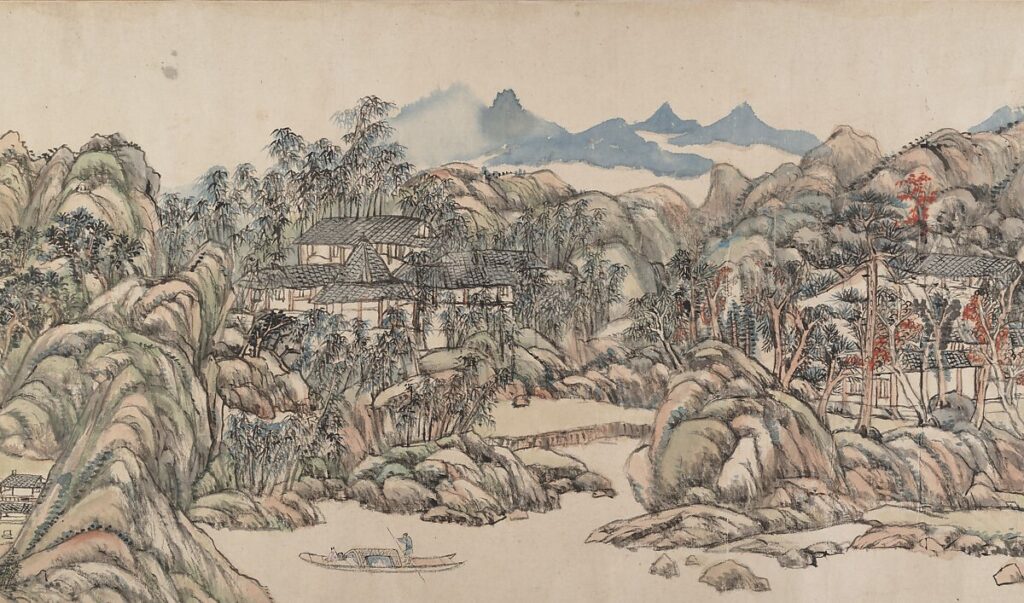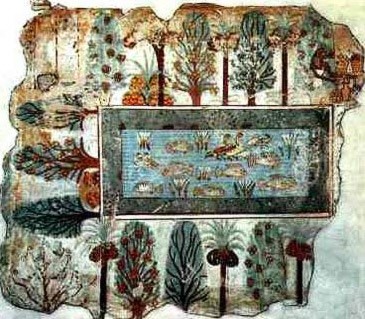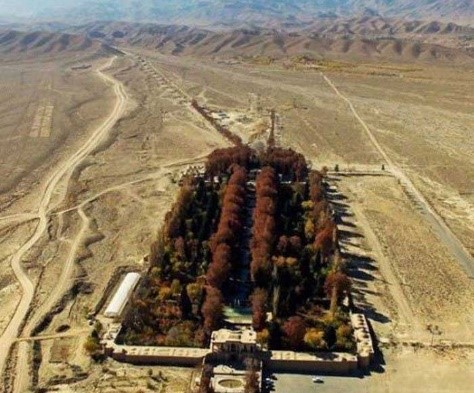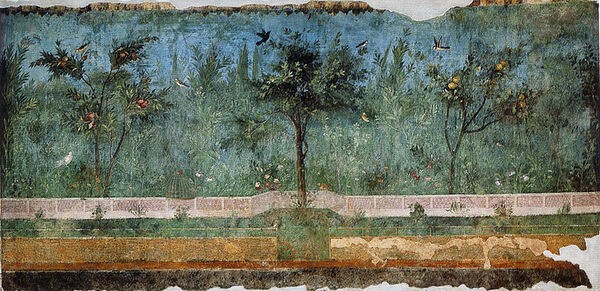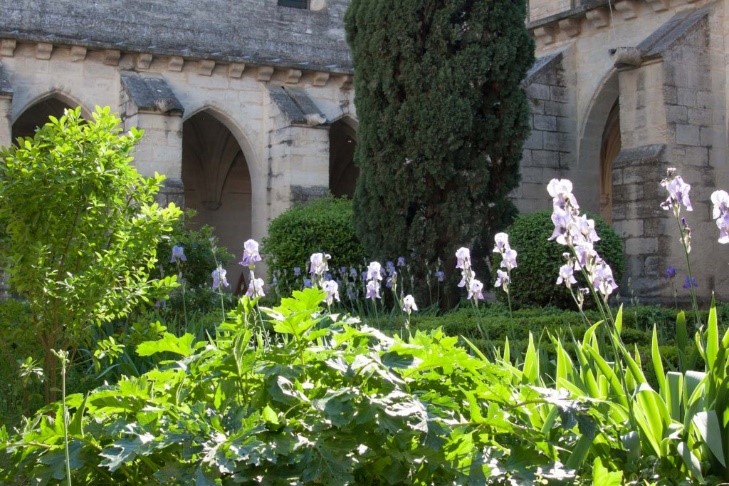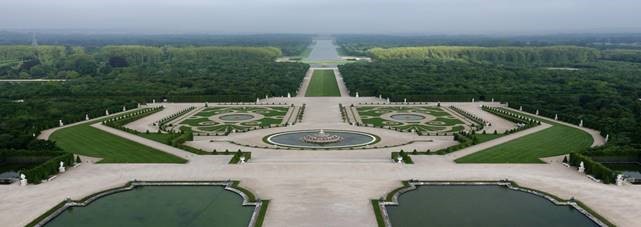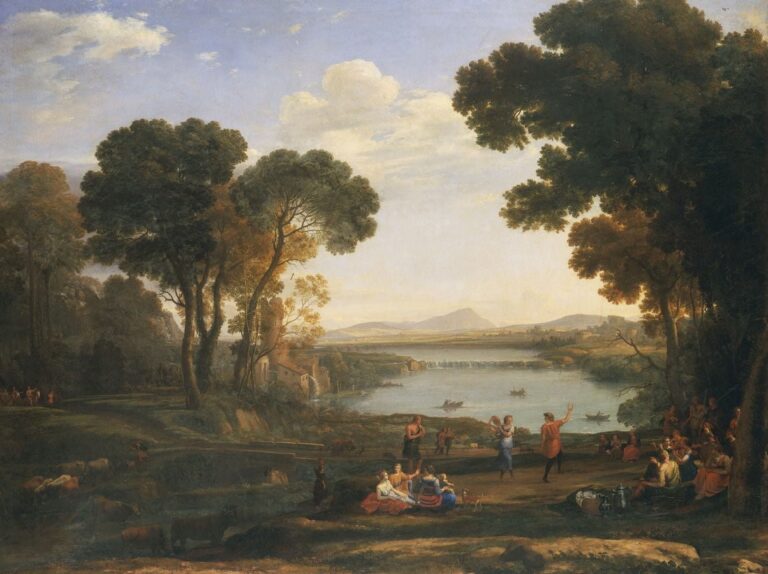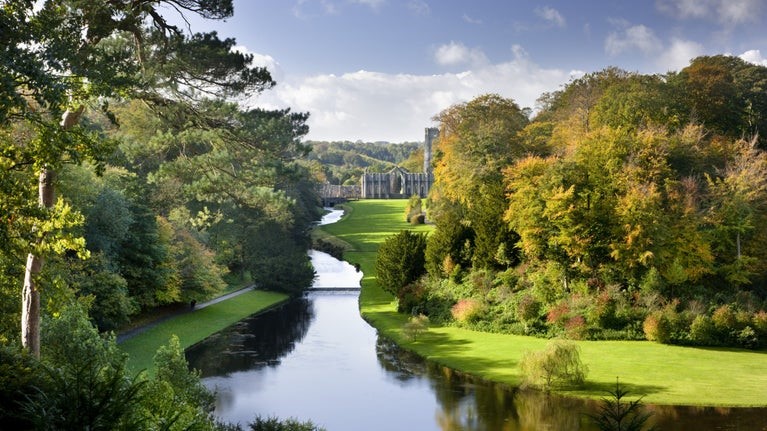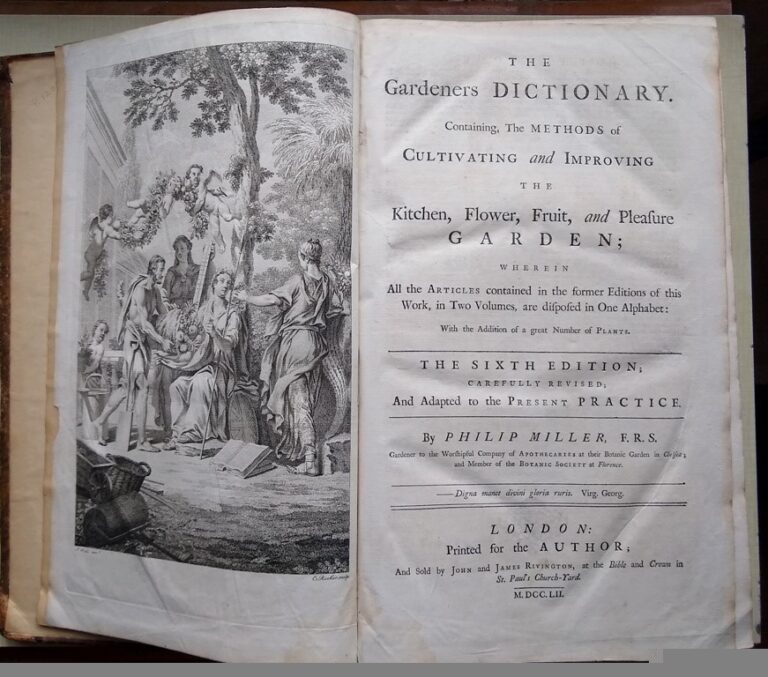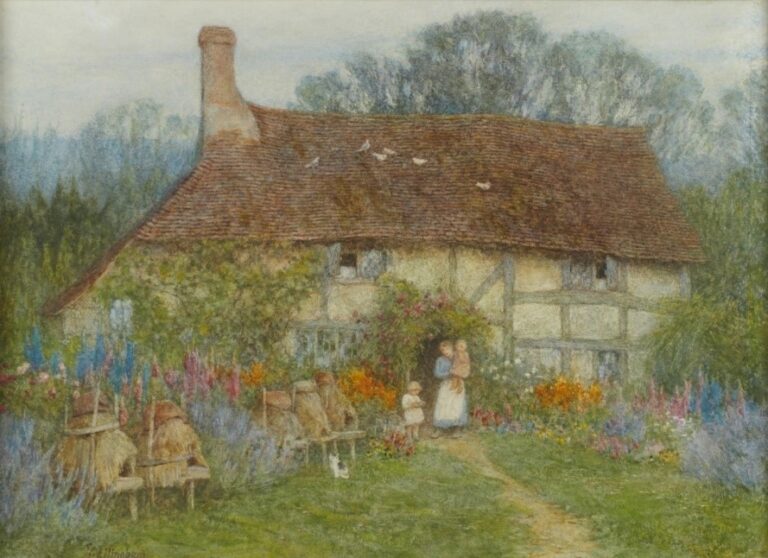
GARDEN MUSINGS
We have so many wonderful writers and poets on the North Shore, that we wanted to have a
page where they can present any work on the subject of gardening.
Short stories for children? Poems on gladioli or peas?
Essays like the one below? A descriptive narrative?
How wonderful would that be? Please send us your submissions.
A Potted History of Gardening: Back to Nature
by Elizabeth Spence
We have been making gardens in one form or another for thousands and thousands of years.
Prehistoric farmers set up their forest gardens for growing food. They cultivated plants and trees – not always in forests – but in ways that functioned like forests. The trees and bushes with their widely varying canopy densities were planted to provide degrees of shade, shelter and act as supports for grapes and other climbing fruit-bearing vines.
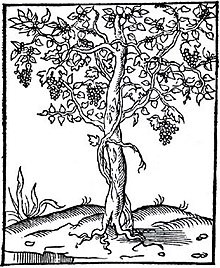
There very well might have been natural or woven hazel branch fences to protect from wild animals or weather as well. A folktale by the Brothers Grimm about a hazel tree tells us that its branches do indeed safeguard against all sorts of creepy-crawlies, and in some Celtic mythologies, the hazel is actually the “Tree of Life!”
In his article “The Lost Forests of Europe,” Max Paschall writes that in prehistoric times, “Europe was not a pristine wilderness, but a continent of handcrafted nut orchards and semi-wild forest gardens carefully managed for thousands of years.”
In China 5000 years ago, gardens appeared in the written record as complementary additions to the emperors’ palaces. This was the case in India and other far-eastern countries as well.
As time went on, the spiritual connection between humans and nature became the driving force behind garden design, and Chinese gardens developed deeply symbolic and mythological associations.
The emphasis was on arranging the garden as an extension and reflection of the surrounding landscape. Gentle contemplation in such an environment was thought to bring harmony and balance to life.
We know that King Thutmotse III of Egypt, who died in about 1425 BC, ordered trees from Asia for his pleasure. In Persia, modern day Iran, King Cyrus the Great included gardens when he was designing his capital city, Pasargadae, in 550 BC. The remnants are still visible.
And Nebuchadnezzar, king of Babylon in the 6th century BC, built the Hanging Gardens for his beloved wife who was pining for the forests and plants of her native home in what is now Northern Iran.
At least that’s what early writers say. The trouble is, they had never been there and they unashamedly copied from each other. Very recent research suggests that the Hanging Gardens a) didn’t exist, or b) are in Nineveh.
In these Middle-Eastern countries, gardens were not only places to enjoy, harvest and study plants, but were also refuges from the desert wind and the heat. This is why, like the ancestors, they always included trees for their fundamental function of providing shade and shelter as much as anything else.
Further protection from the elements and outside threats eventually came by surrounding the gardens with walls.
From the villa of Livia, Rome. 1st century BC.
In the year 529 AD we find a walled garden at the Benedictine monastery at Monte Cassino in Italy.
The plan within such spaces was usually a kitchen garden, a medicinal garden and an orchard, which, strange to say, was often a burying ground as well.
The Dominican monk, Albertus Magnus, who lived in the 13th century describes the walled-in cloister garden as not only a place to grow food and medicines, but also as a retreat for religious contemplation and reflection.
He talks about benches made of grass and flowers planted on stones and planks where you could sit and meditate on God, the meaning of life and such.
A Modern Carthusian Enclosed Garden
In 802 Charlemagne, king of the Franks in what is now parts of France and Germany, ordered a charter to be drawn up, known as the Capitulary of Charlemagne which, among other things, listed the plants to be grown in royal gardens. Included in a long list were ones very familiar to us today: nasturtiums, leeks, lettuces, gladioli, sage, mint and roses.
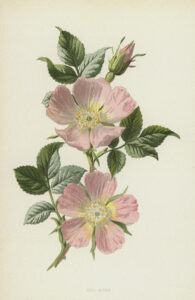
Dog Rose.
Picture Source: F. Edward Hulme, Familiar Wild Flowers, Cassell: London, 1878 rpt. 2015
Once we get into early modern times in Europe, the fight starts. It was the Ancient vs. the Modern.
The Ancient was a result of discoveries during the Renaissance of the writings of Greek and Roman antiquity which started the so-called classical revival. In 16th century Italy, the idea of the garden was now inspired by ancient classical ideals of design and beauty.
They were based on perfect mathematical proportions, symmetry and harmony of form. It was in the gardens at Versailles in Paris built in the 17th century that these ideas found one of their greatest expressions.
One of the gardens at Versailles
Our mastery of mathematical principles showed that we were definitely capable of using our God-given reason and understanding to interpret and represent divine order on Earth.
It’s about wonder, amazement and surprise. It’s about looking outward, not inward. It’s about order, science and art. It’s about us in the world. It is certainly not about the inward-looking, contemplative peace and serenity of an enclosed monastery garden.
The idea of the Modern also had roots in the ancient classical world and the vibrant interest in Italy and Greece, but it was charged with novelty through works of art, especially those of the French painter, Claude Lorrain who specialized in Italian landscapes.
Young Englishmen who went on their “Grand Tour” of Europe brought back countless paintings of this sort.
Claude Lorrain, Landscape with Dancing Figure (The Marriage of Isaac and Rebecca). 1647
The political, religious and social turbulence in England in the 17th and 18th centuries proved fertile ground for the development of a new, particularly English, type of garden. The emerging idea was that nature didn’t need to be rigidly controlled. Constructing a garden was no longer an exercise in applying mathematical principles to a landscape.
Now, copying Lorrain and other artists, the features of a garden consisted of sweeping vistas, (artificial) lakes, rivers or ponds, stands of trees and (brand-new) classical ruins. It was all carefully designed, but it didn’t look like it. They imagined it represented a truer form of nature as God intended.
The Half Moon Pond at Studley Royal Water Garden
In fact, Queen Marie Antoinette of France was so taken with these new developments that she added an “English Garden” to the grounds at Versailles.
It had always been primarily the aristocracy and the landed gentry who had enjoyed such lavish gardens as these, of course, although they did provide enormous employment opportunities for those who needed to work.
The burgeoning middle classes were taking more and more interest in developing their own private gardens for practical and artistic reasons, and an increasing number of “how-to” books on gardening were being published to fill a growing need.
Philip Miller, The Gardener’s Dictionary, London, 1752
At the lower end of the social scale, in spite of all kinds of attempts to improve their lot, many of the rural poor lived in their cold, drafty, filthy, overcrowded, often tumble-down cottages, and their gardens existed solely to provide food and medicine. There was little in the way of garden organization here.
Plants were grown haphazardly, the herbs, flowers and vegetables all intermixing. Self seeding was rife, things were planted where there was a gap, and no-one bothered about tidying anything up.
You could say this was the garden in its true natural state.
The 19th century response to increasing industrialization precipitated an almost frantic call for a return to nature, and the romanticized image of the cottage garden took hold in art and in practice to exemplify that idealized, nostalgic idea of civilized nature virtually untouched by human hand – which it wasn’t, of course.
The Romanticized Version: A Surrey Cottage by Helen Allingham
Since the 19th century, gardening trends have come and gone, as indeed they have since the beginning. The difference for us now is that we have more leisure time than so often in the past, and we can access seemingly limitless amounts of information to feed our imaginations.
Professional and amateur landscape designers are eager to show us online what fascinating and interesting ideas we can incorporate into our gardens to help make them expressions of our own personalities, perhaps. We can ask any question and find an answer.
We can recreate an Egyptian garden, a mini-Versailles, even an imaginary version of the Hanging Gardens of Babylon in our backyards if we want to, all because of the thousands of years of research and commentary now so very readily available to us.
There is one aspect that emerges as a red thread through this little potted history of gardening, and that is the question of the relationship between the garden and the natural world. And that question is still being ardently discussed.
We have to admit that creating any garden is changing the environment around us, whether we do it to provide food, explore design and planting options, experiment with shape and colour, establish a space for relaxation and meditation, keep up with the Joneses, or just because.
Recent statistics suggest that most people these days engage in ornamental gardening. Yet for many gardeners in our area, this isn’t necessarily the case. Their prime considerations are self-sufficiency and environmental responsibility.
In this vein, over the last 30 years or so, there has been great interest in the “food forest,” or “forest gardening.” As in a forest, trees, shrubs and plants are intermingled in an orderly way to produce edible crops. Or using modern-day jargon, the aim is to create “forest-like structures to increase the biodiversity, efficiency, and sustainability of food production systems.”
Does this sound familiar? It should. It’s what our prehistoric ancestors were doing many thousands of years ago. We’re going back to nature. Again. In our own modern way.
Copyright © Elizabeth Spence. 2024.


